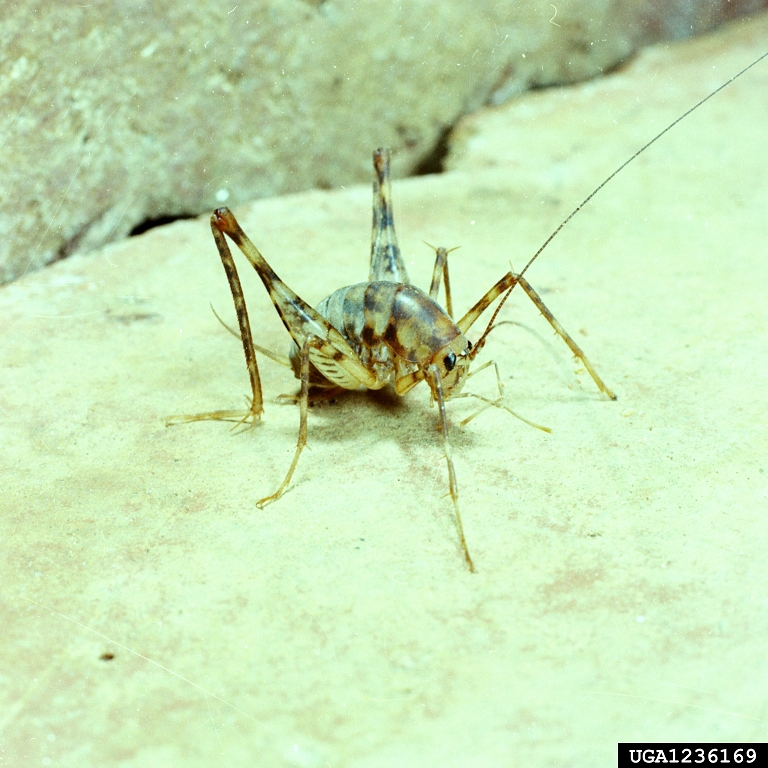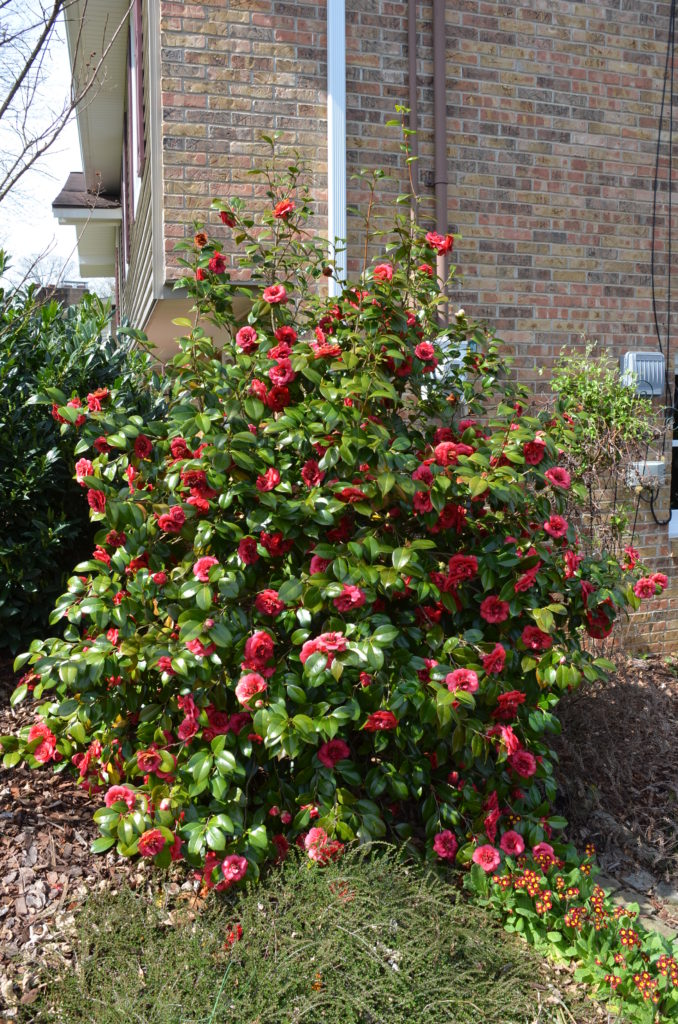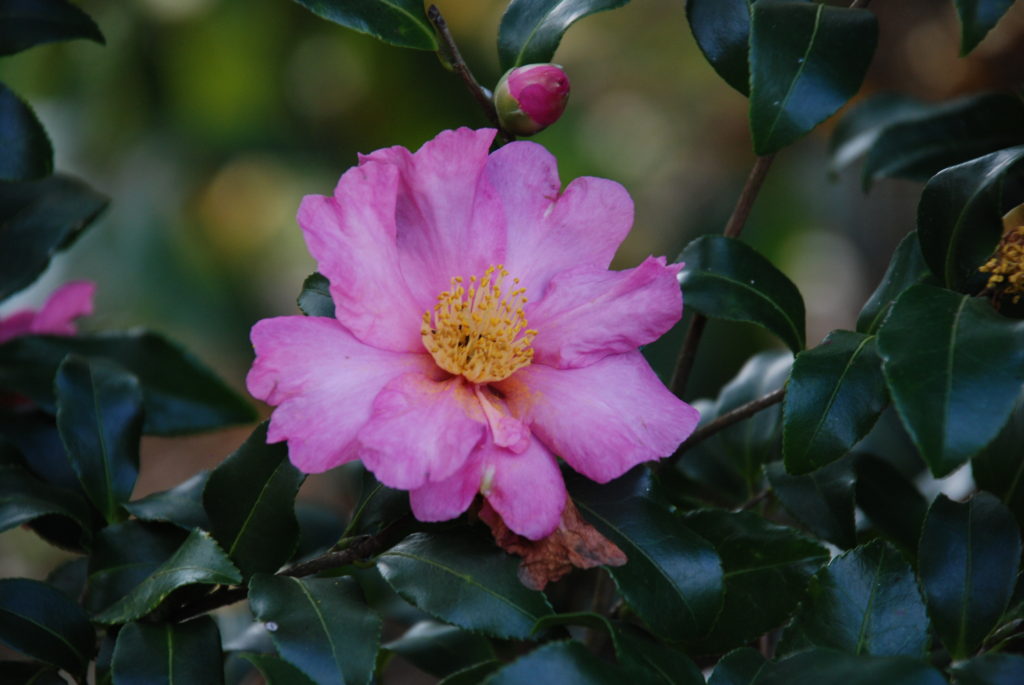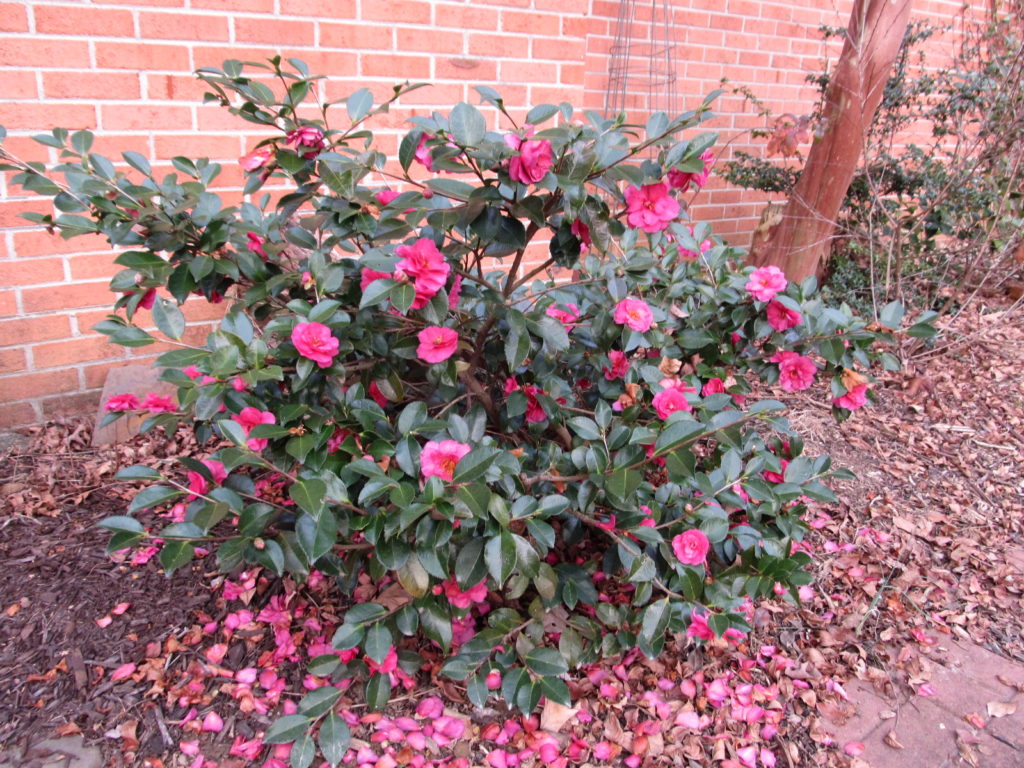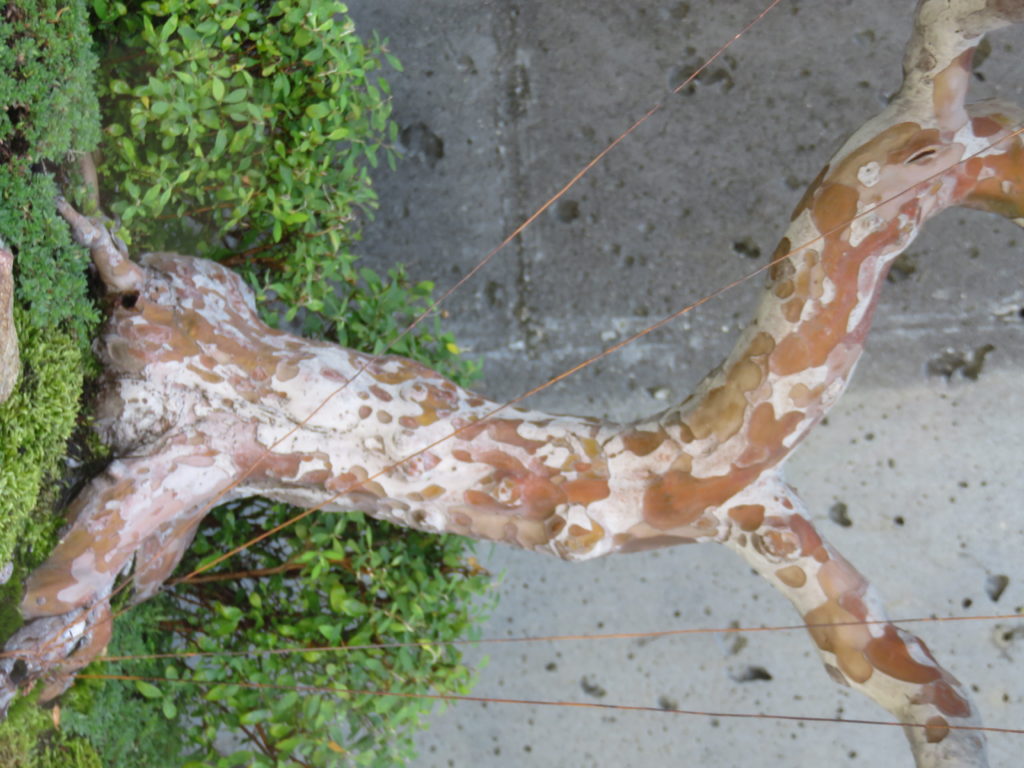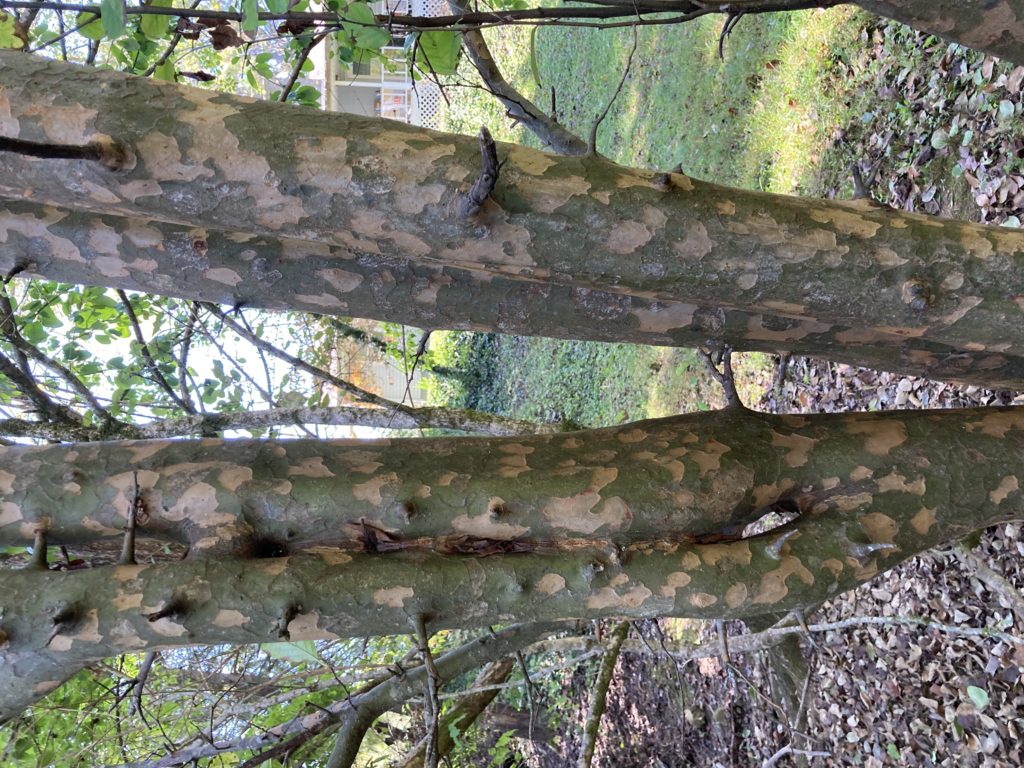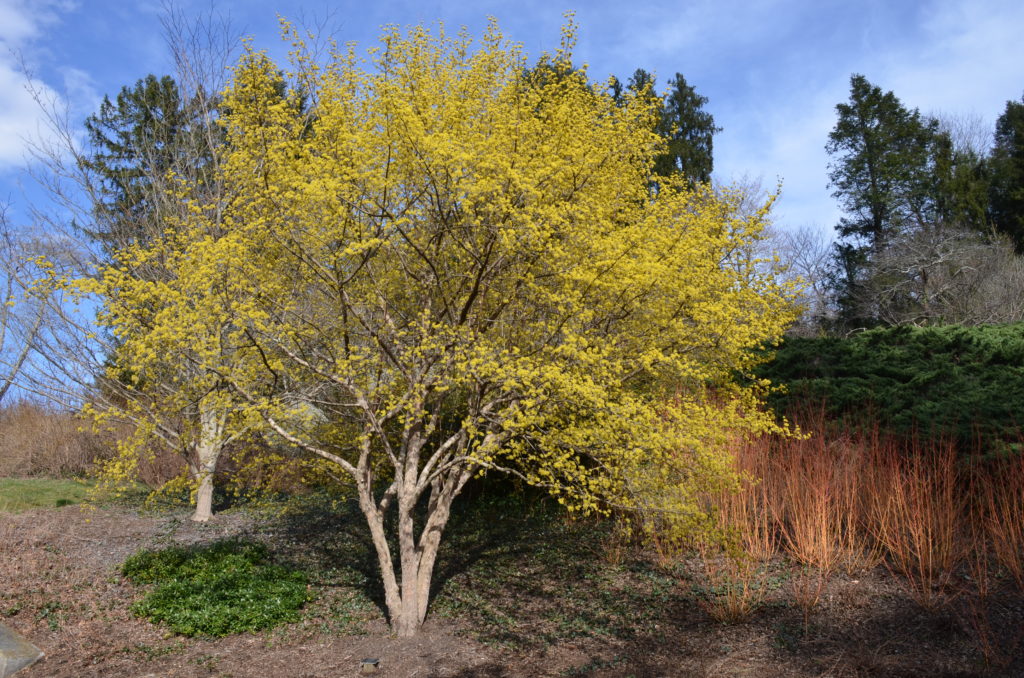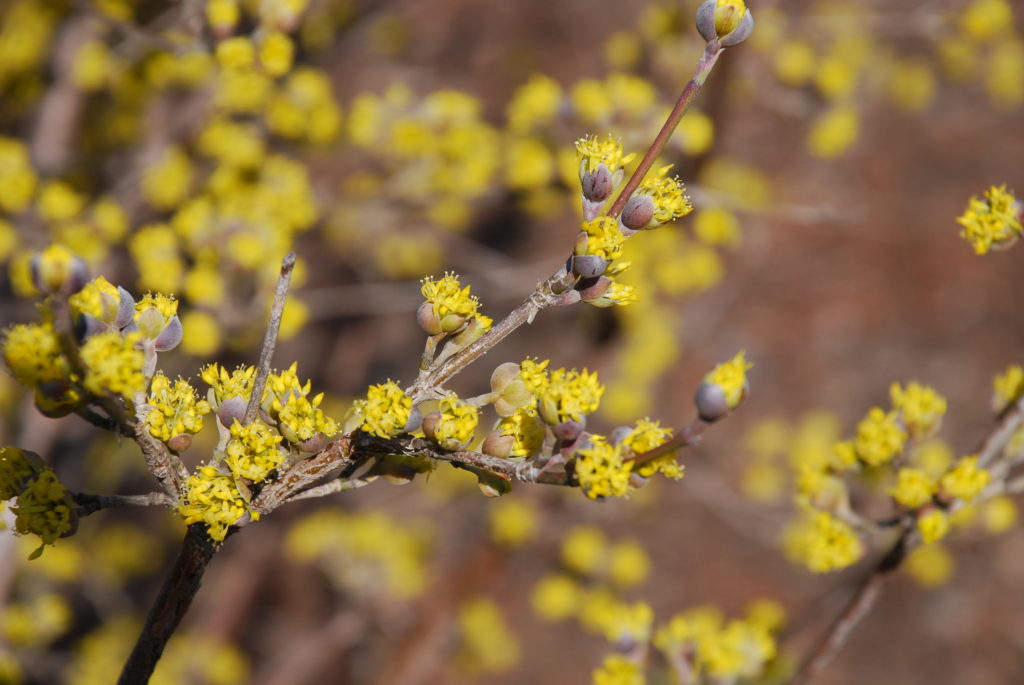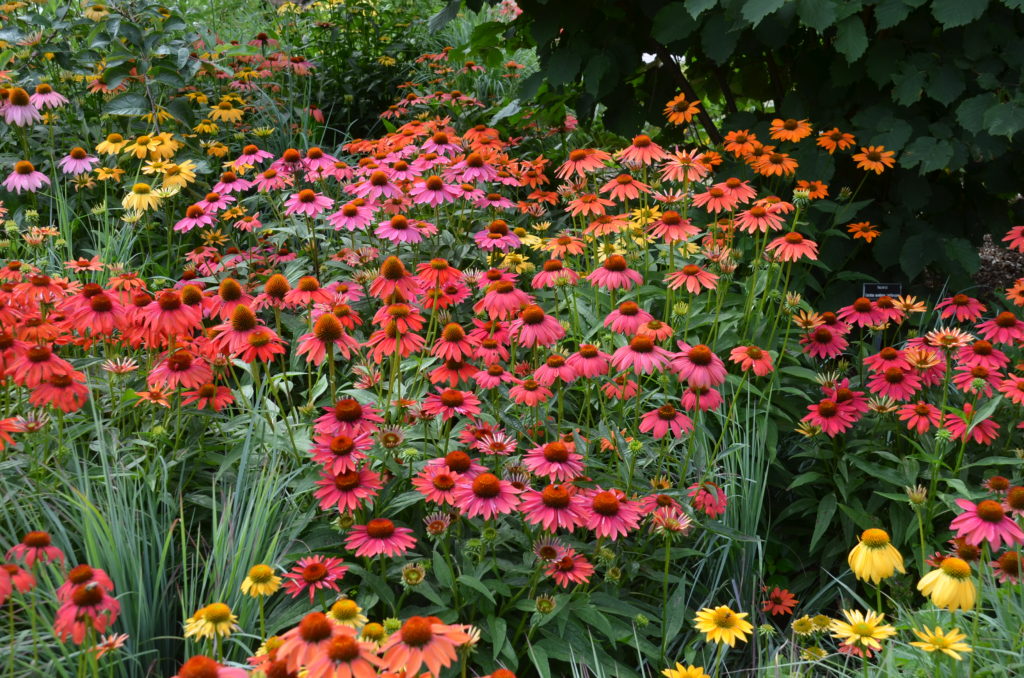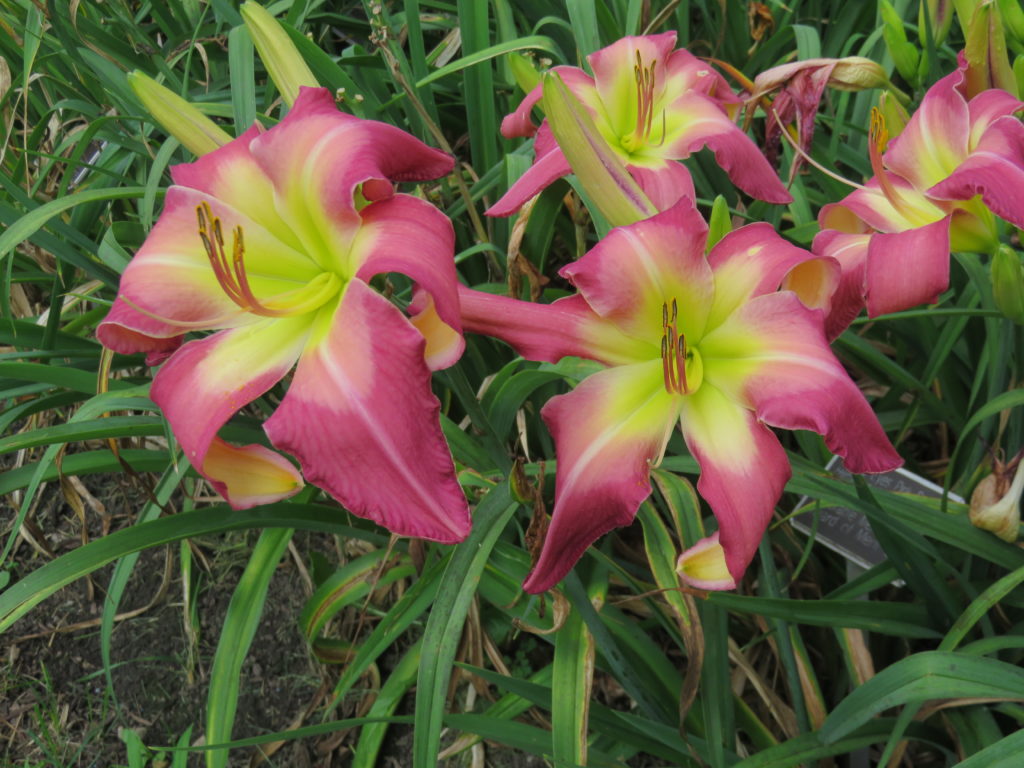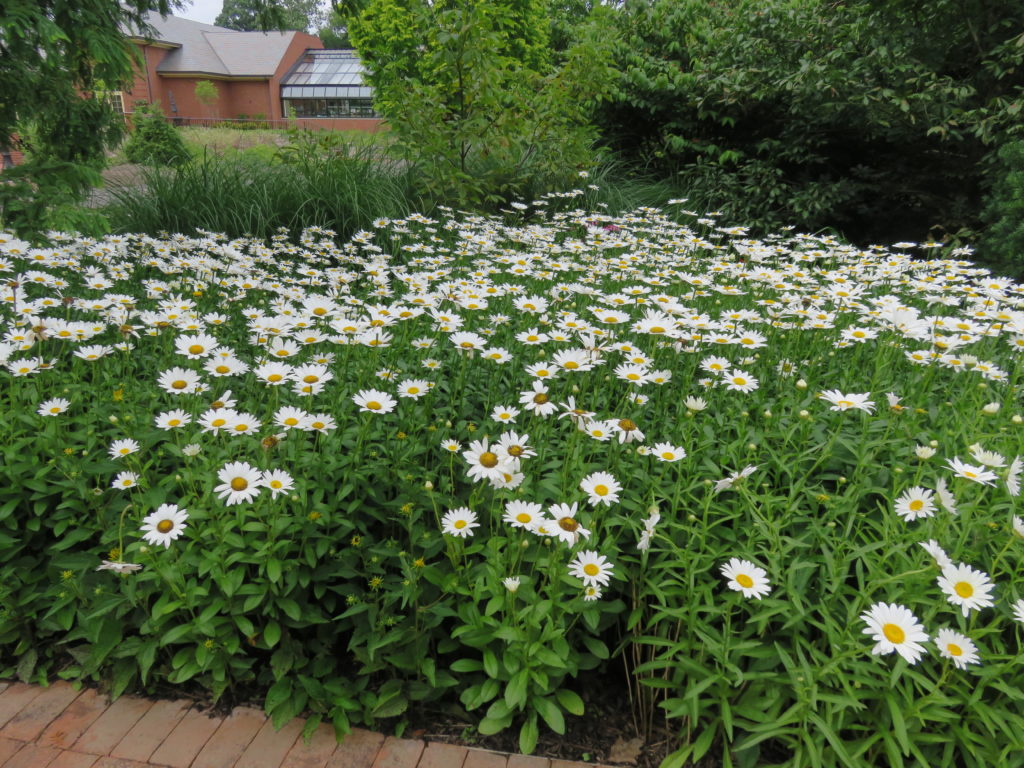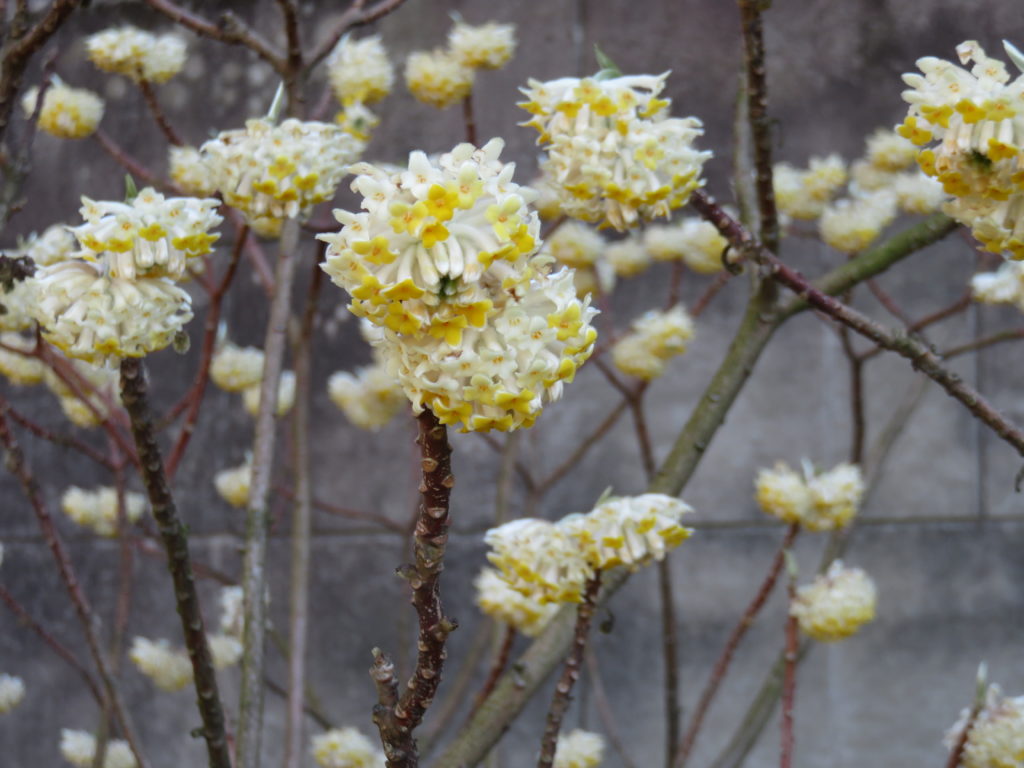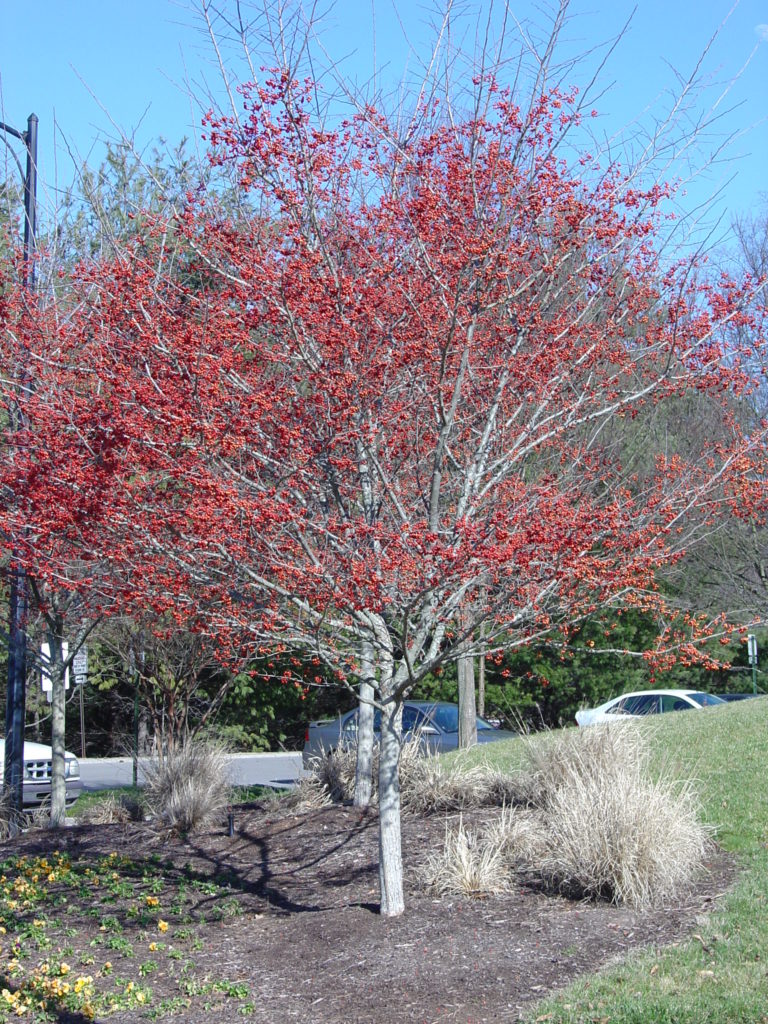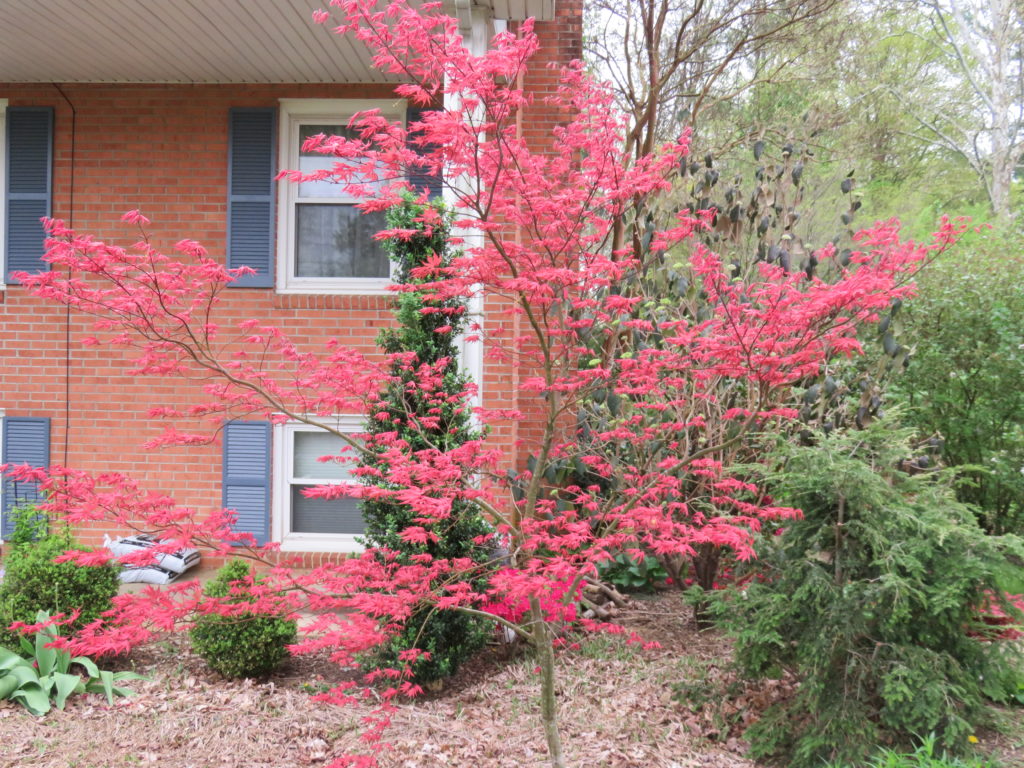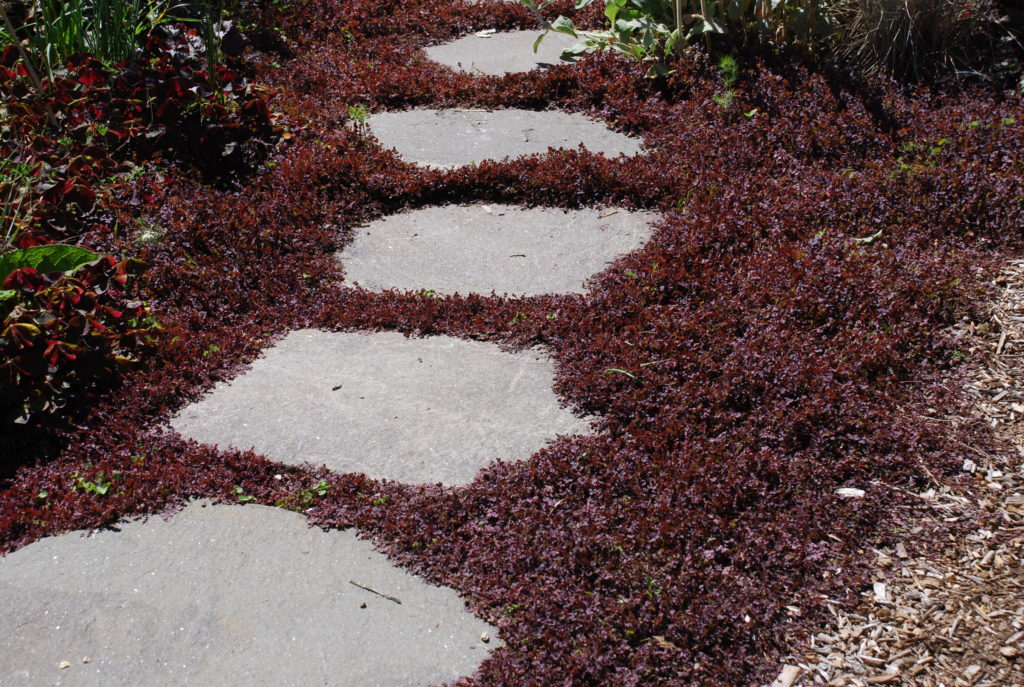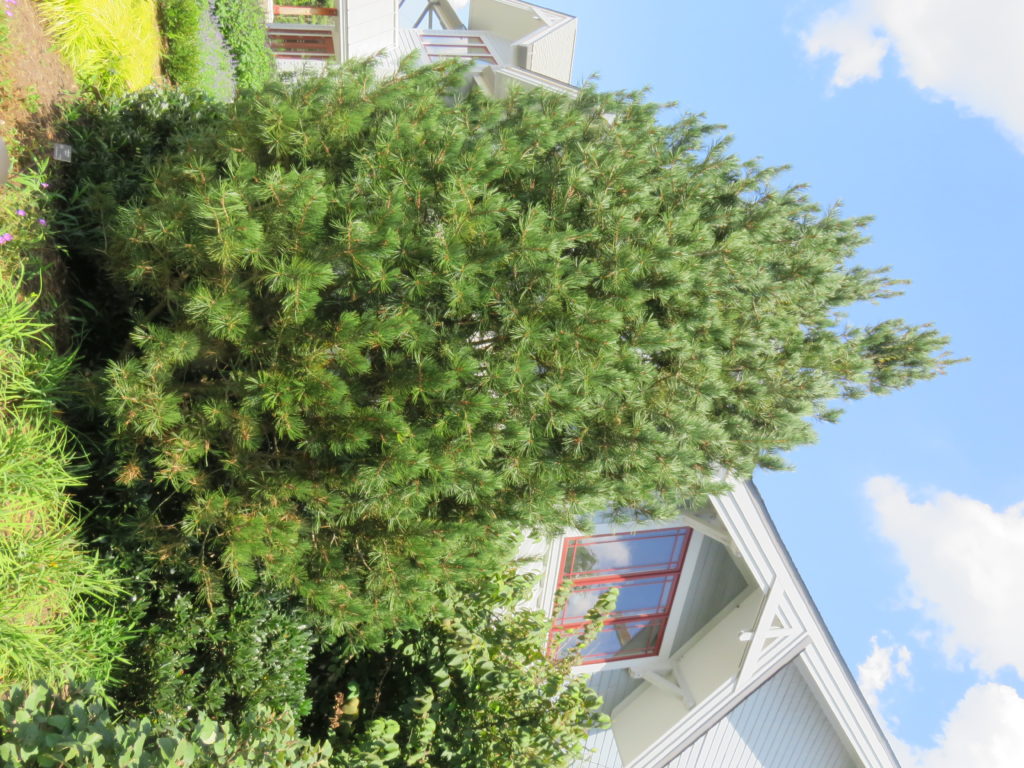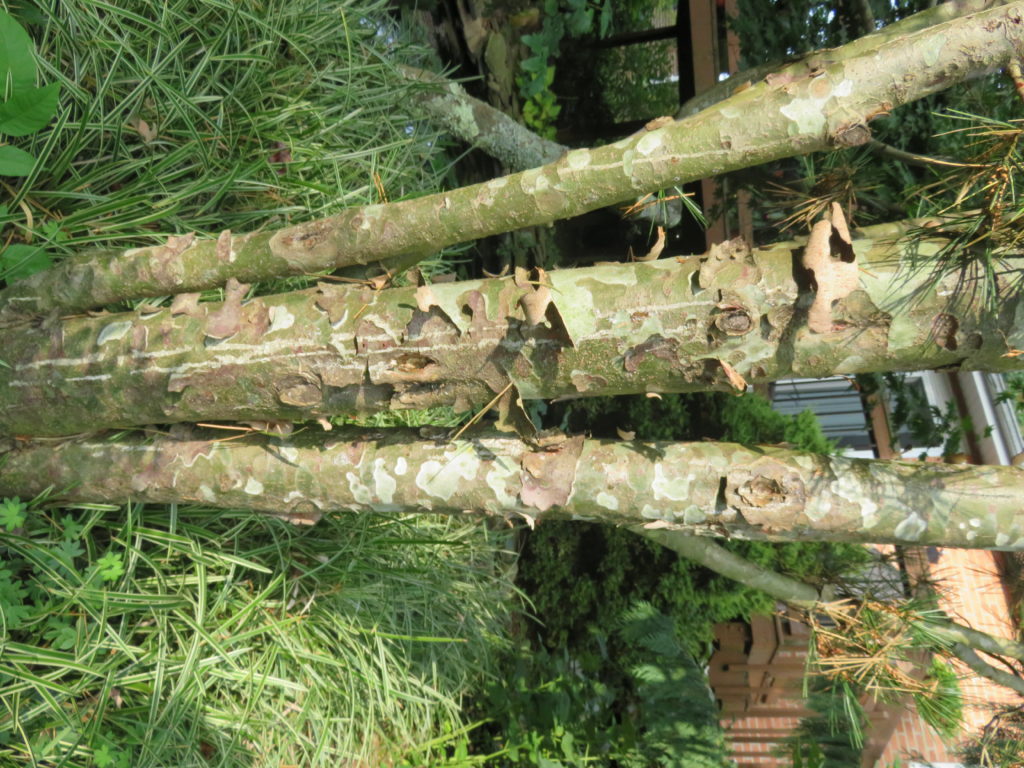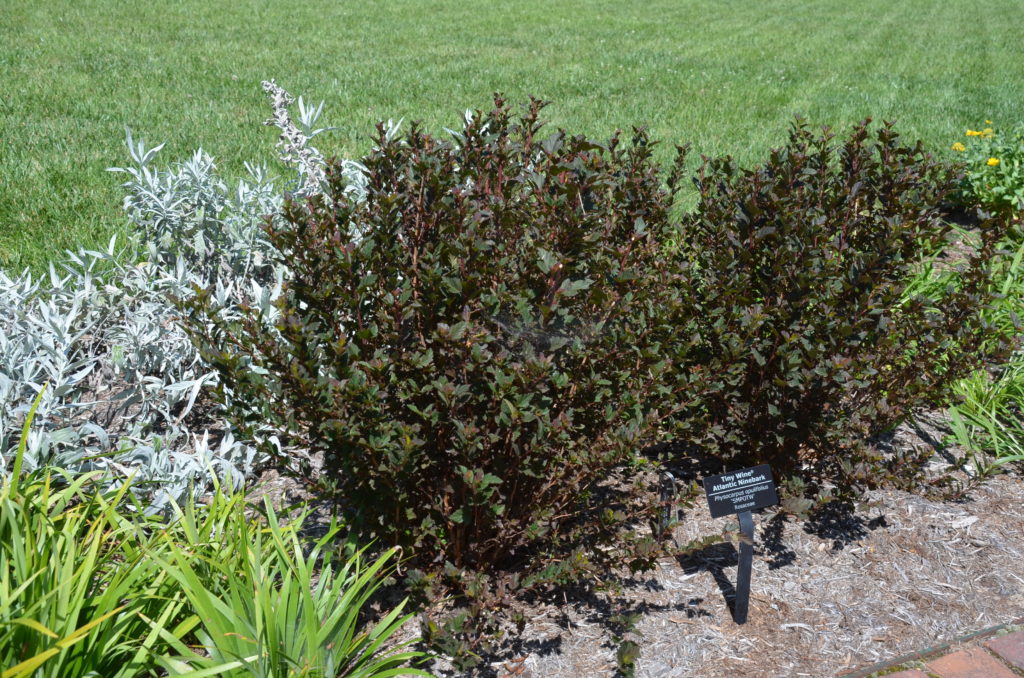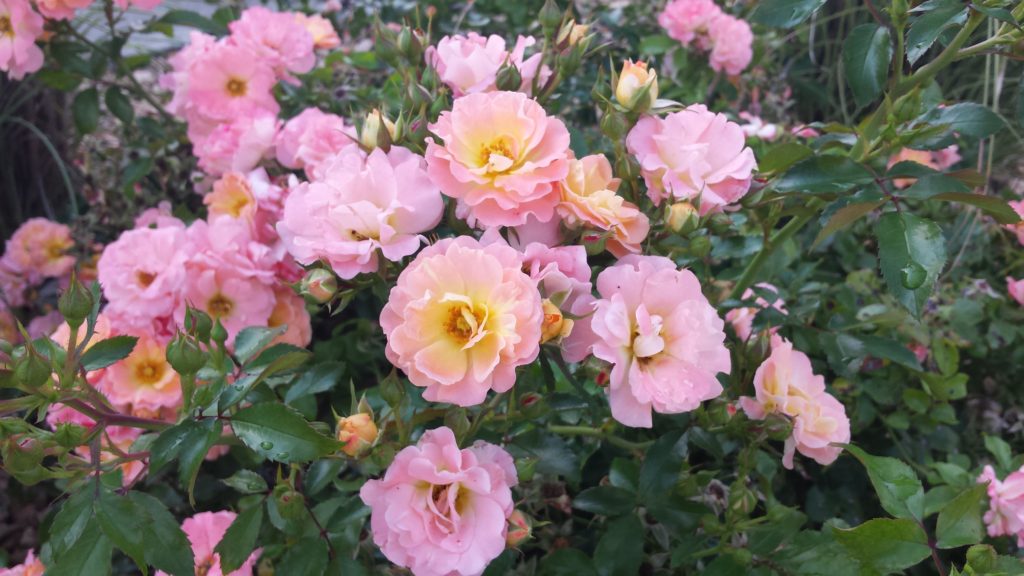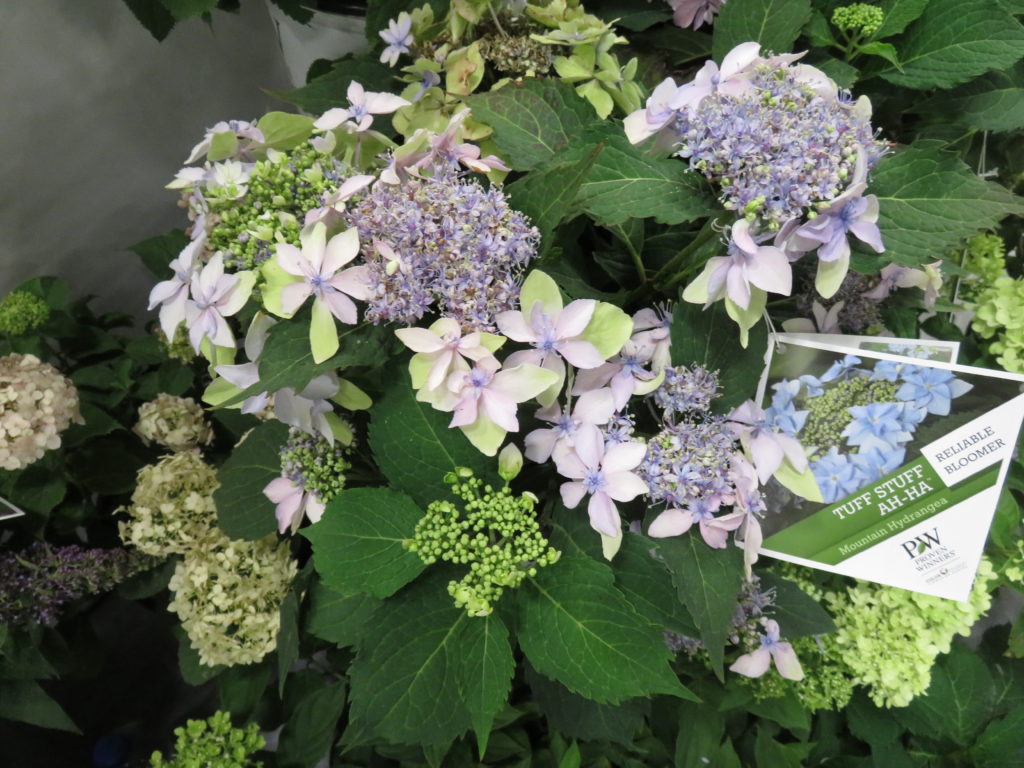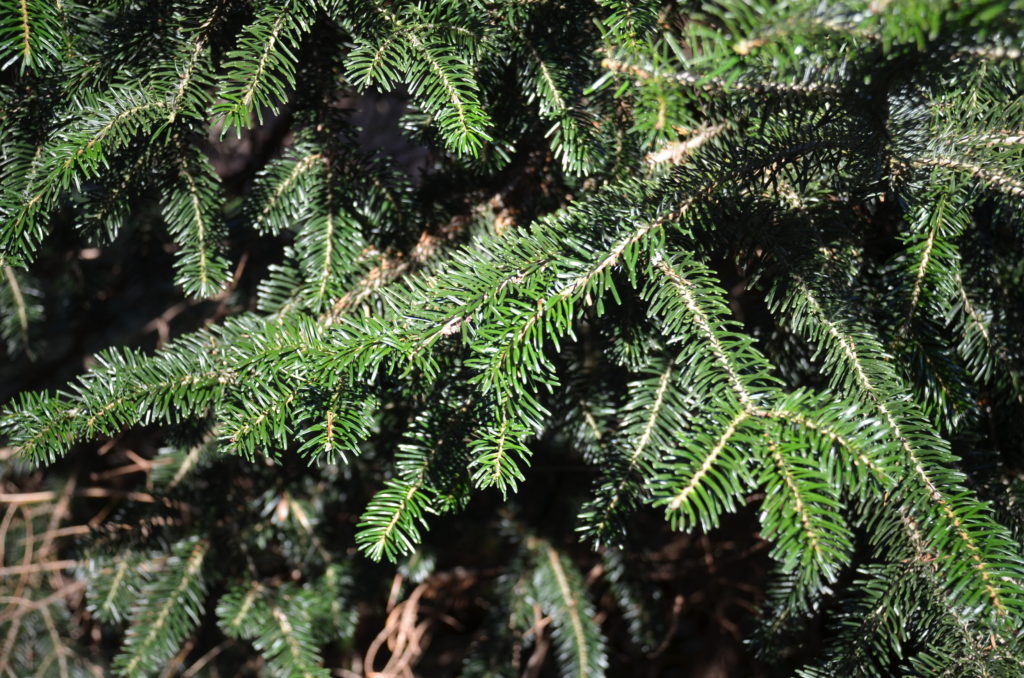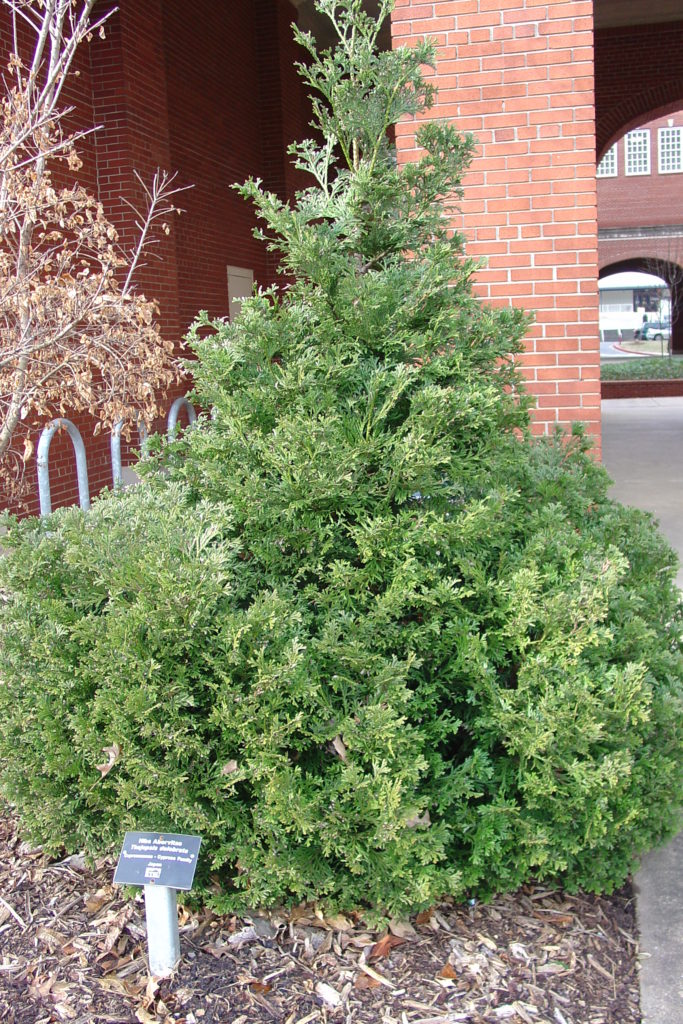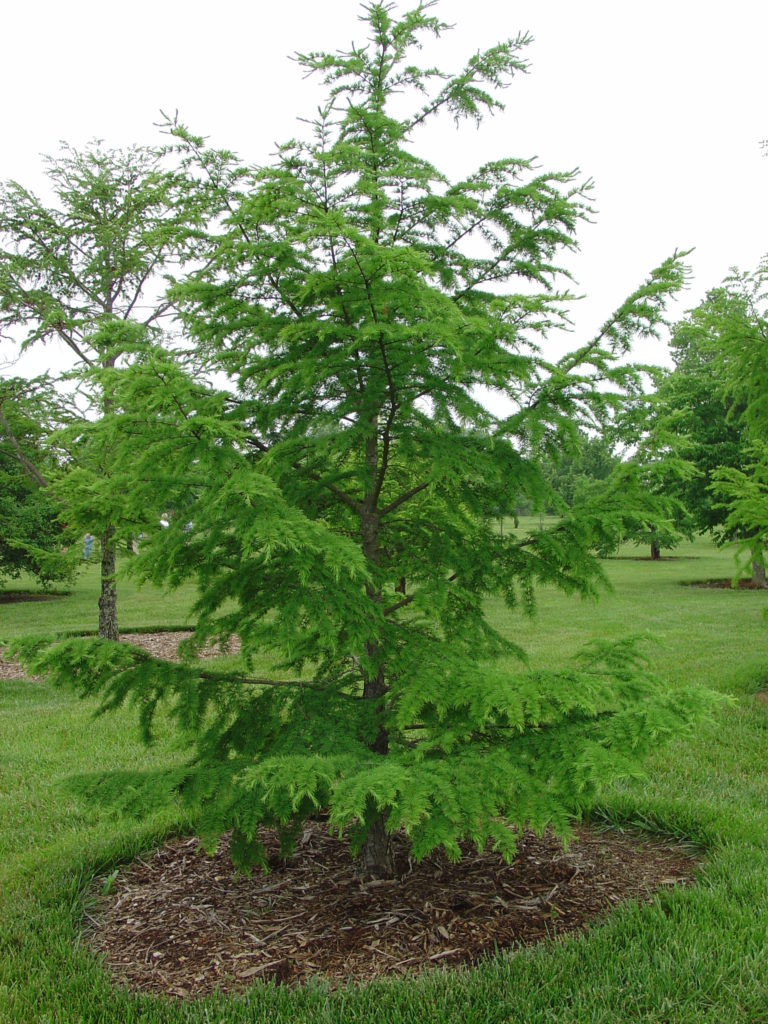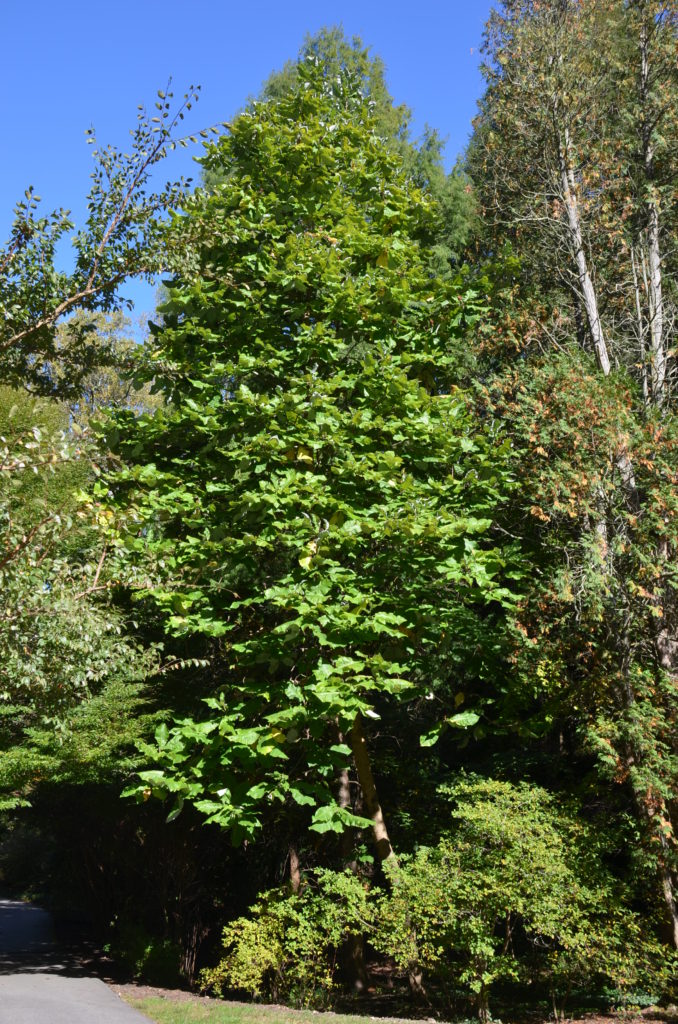
Bigleaf magnolia (Magnolia macrophylla) is a deciduous, native tree that reaches 30-40 feet tall. This unusual pyramidal tree magnolia is rarely found in the wild, inhabiting a few rich wooded areas in river valleys in the southeastern U.S. (USDA hardiness zones 5-8). With age, the tree develops a spreading rounded crown.
Bigleaf magnolia is a unique landscape feature. This deciduous magnolia bears the largest flowers of any tree in North America. Its enormous-size mature leaves are green above and silvery-gray below that can be up to 36 inches long and 12 inches across. You find the tree growing in cool moist mountainous habitats and in mildly acidic soils.
The cream-colored goblet-shaped blooms open to 8-10 inches across, and emit a delightful fragrance up close in late May. After flowering, the seed pods swell with seeds covered in a protective red seed coat.
Cultivars are rare – ‘Palmberg ’ (with slightly larger flowers) and ‘Purple Spotted’ (flowers with purple stain at their base). For most people the place you see the first bigleaf magnolia is at a regional botanical gardens in the Mid-Atlantic and Southeastern U.S.
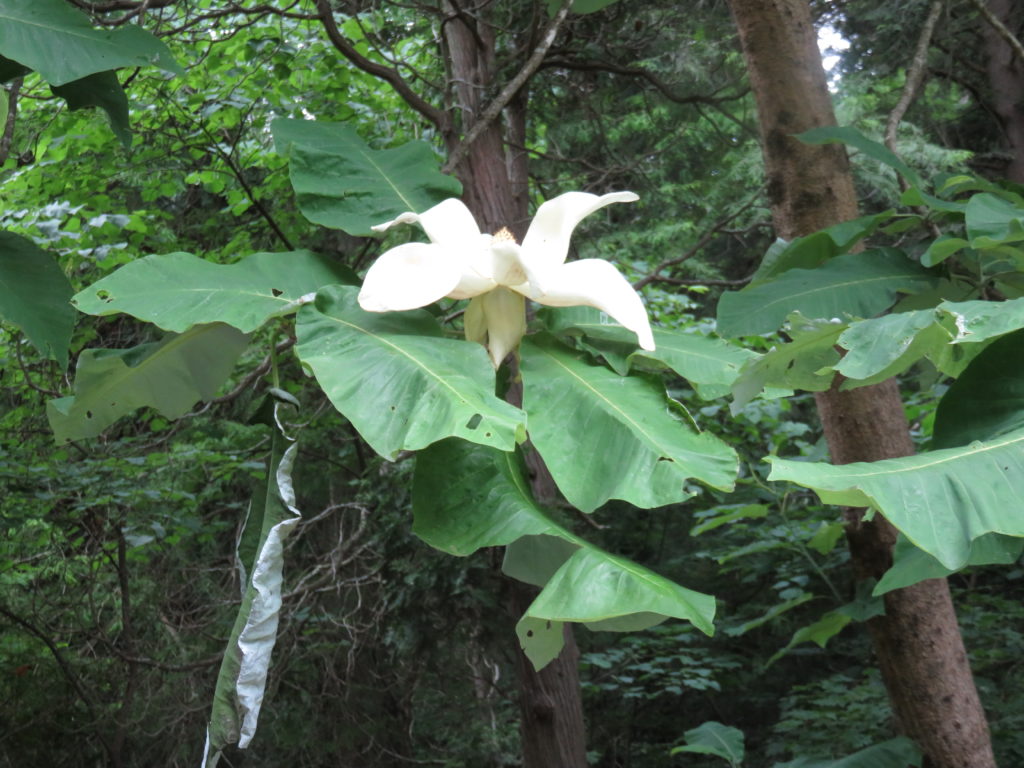
The huge flowers are often located far off the ground and are not always easy spotted from the ground. Flowers give way to spherical cone-like fruits which mature to red in late summer, releasing individual red coated seeds attached to slender threads.
Its large foliage limits its use in many urban landscapes. Bigleaf magnolia grows best in moist, organically rich, well-drained loams in full sun to part shade. Generally intolerant of soil extremes (dry or wet) as well as most urban pollutants. Best sited in locations protected from strong winds which may shred the large leaves.
For the patient gardener, the tree likes to get its roots established before adding on lots of vegetative shoot growth. The first blooms may not appear for 12 or more years. Bigleaf magnolia is hard to purchase in the garden marketplace. Search for young seedlings at native plant emporiums online.
Landscape Site: moist woodlands

